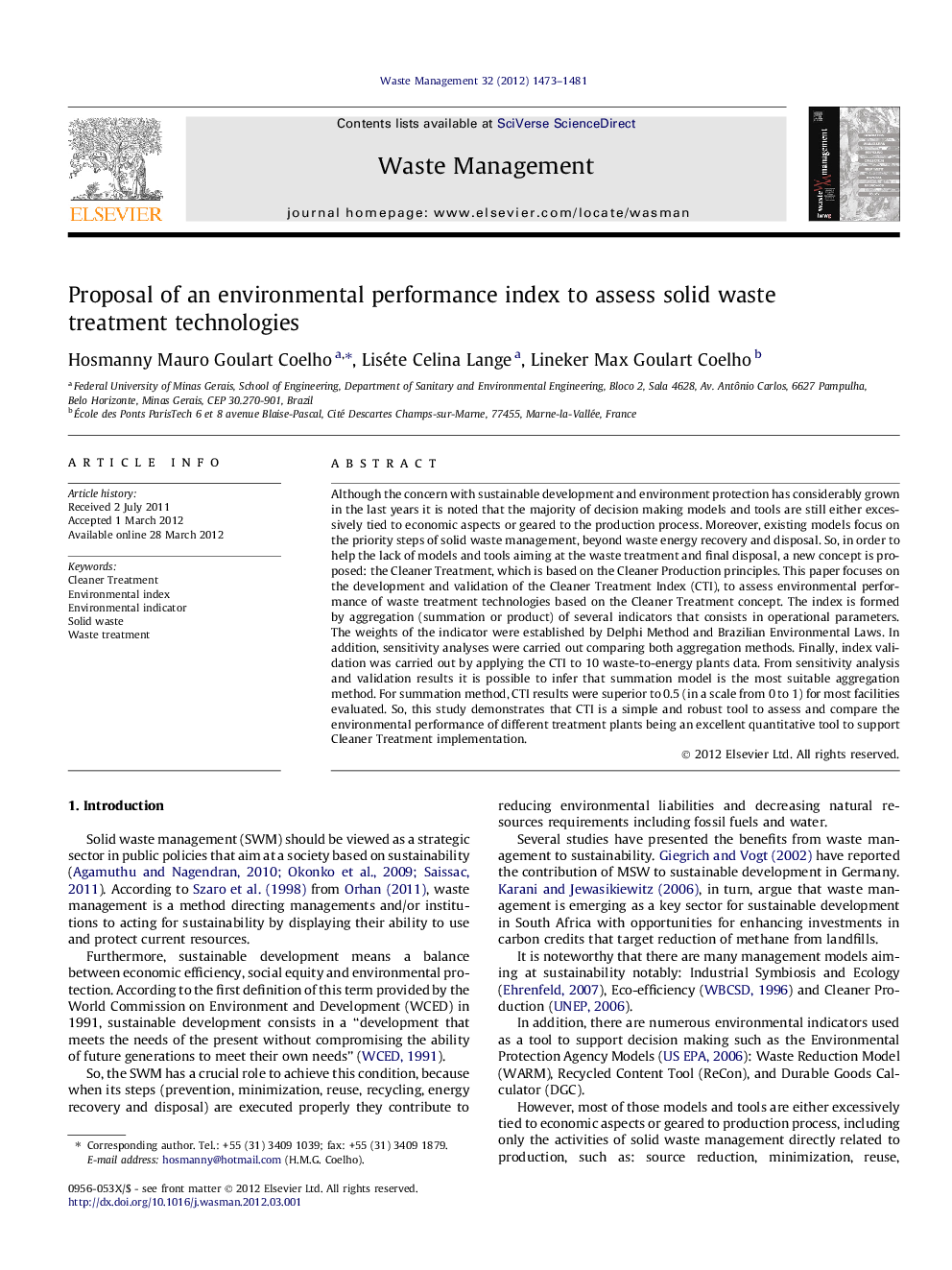| Article ID | Journal | Published Year | Pages | File Type |
|---|---|---|---|---|
| 4471873 | Waste Management | 2012 | 9 Pages |
Although the concern with sustainable development and environment protection has considerably grown in the last years it is noted that the majority of decision making models and tools are still either excessively tied to economic aspects or geared to the production process. Moreover, existing models focus on the priority steps of solid waste management, beyond waste energy recovery and disposal. So, in order to help the lack of models and tools aiming at the waste treatment and final disposal, a new concept is proposed: the Cleaner Treatment, which is based on the Cleaner Production principles. This paper focuses on the development and validation of the Cleaner Treatment Index (CTI), to assess environmental performance of waste treatment technologies based on the Cleaner Treatment concept. The index is formed by aggregation (summation or product) of several indicators that consists in operational parameters. The weights of the indicator were established by Delphi Method and Brazilian Environmental Laws. In addition, sensitivity analyses were carried out comparing both aggregation methods. Finally, index validation was carried out by applying the CTI to 10 waste-to-energy plants data. From sensitivity analysis and validation results it is possible to infer that summation model is the most suitable aggregation method. For summation method, CTI results were superior to 0.5 (in a scale from 0 to 1) for most facilities evaluated. So, this study demonstrates that CTI is a simple and robust tool to assess and compare the environmental performance of different treatment plants being an excellent quantitative tool to support Cleaner Treatment implementation.
► Proposal of a new concept in waste management: Cleaner Treatment. ► Development of an index to assess quantitatively waste treatment technologies. ► Delphi Method was carried out so as to define environmental indicators. ► Environmental performance evaluation of waste-to-energy plants.
